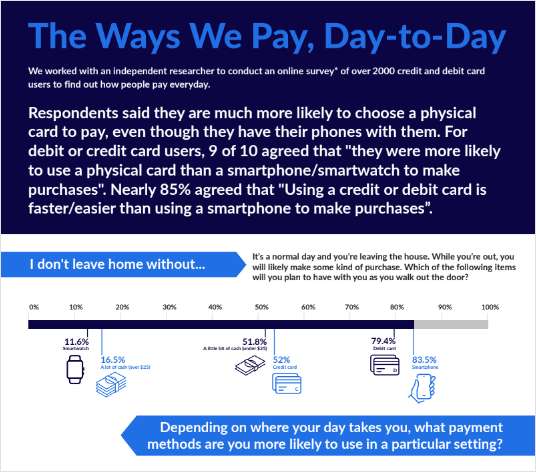Opening Day for Baseball, and Arbitration, at Fenway
Baseball arbitration, in a nutshell, is that variety of arbitration where the disputing parties each make a final offer, and the task of the arbitrator is to select and award only one of those numbers.
March 21, 2018 at 12:52 PM
5 minute read

Opening day at Fenway Park is always a special day for me. The beginning of a new season. That time of the year when, in the words of former Yale University president and commissioner of Major League Baseball A. Bartlett Giamatti, we can “Take Time for Paradise.” This year's at-home opener comes on April 5, pretty early in the new season.
As I spend time in the late winter boning up on the activities of my (and Giamatti's) beloved Red Sox, I come to the intersection of two of my keenest interests: baseball and alternative dispute resolution. The point of intersection, of course, is the utilization of a particular brand of arbitration to resolve salary disputes.
Baseball arbitration, as it is known to sports fans, or “final offer” arbitration to many others, was utilized by the Red Sox only once this year, and that was in the case of Boston's great outfielder Markus Betts, better known as “Mookie” to the baseball and sports world.
Baseball arbitration, in a nutshell, is that variety of arbitration where the disputing parties each make a final offer, and the task of the arbitrator is to select and award only one of those numbers. The theory behind final offer arbitration is that the disputing parties, knowing that the adjudicator will select only one of the two numbers submitted—presumably the most reasonable and appropriate one—will move toward the center and be more reasonable in their respective positions, fearing that the arbitrator will choose the opponents' number if it seems even somewhat more reasonable.
Baseball arbitration comes in a number of varieties, one of the more interesting being “night baseball” arbitration. In that scenario, the arbitrator hears the presentations of the two parties but is not told of their last final offer numbers. The arbitrator then makes an independent assessment and selects the last final offer which is closest to the arbitrator's number. Other variations also exist.
Of some 10 Red Sox players who were eligible for arbitration this year, nine agreed to terms and only Betts opted for an arbitration hearing. Betts, who was paid $950,000, in 2017 apparently valued his services more highly than the $7.5 million offered by the team. Betts' demand was $10.5 million. A panel of arbitrators was convened and selected one of the two final offer numbers ($10.5 and $7.5 million in this case). Betts emerged victorious with an award of $10.5 million. It has been reported that teams won eight of 15 decisions last winter and 302 of some 526 arbitrations since the system was started in the mid-1970s.
Betts chose to attend the hearing and seemed pleased with what he saw and heard. To its credit and business acumen, the team apparently did not seek to disparage the star outfielder but rather made an analytical presentation with statistical comparisons and evaluations of Betts compared to other players considered to be of similar ability and status.
The Red Sox experience with its arbitration eligible players this past year (and in general) seems to me very telling as to how this form of arbitration can optimally work. In my judgment, the real benefit of the process is that it forces the parties to become much more reasonable in their offers and demands, knowing that the arbitration panel must select only from one of the two numbers. Neither party wants its number to be perceived as more unreasonable than its counterparts.
A number of ADR experts commented on the baseball arbitration technique on a prominent ADR Listserv discussion recently. A recurring theme was indeed that baseball arbitration is as much an effective negotiation tool as it is an adjudicatory tool.
Still, the use of final offer arbitration in baseball is not universally acclaimed. A 2017 article by Dillon Reid in Dispute Resolution Journal argues that mediation, either facilitative or evaluative, is far better than the arbitration model now employed. A major shortcoming cited is the danger of a breakdown in positive relationships between the player and the team. As pointed out above, however, comments by Betts after the arbitration process were quite favorable and showed no signs of a damaged relationship with the team, but then again, he won!
While baseball arbitration has enjoyed only limited utilization in non-baseball and other situations, it is a useful option to consider in those contexts: I suggested in a previous column on the topic that it is certainly worth a “tryout” in other settings. Admittedly, it is most effective in a distributive setting where the dispute is primarily monetary. Nonetheless, it is a process to consider where the parties are looking for efficiency, do not necessarily need a reasoned award and are willing to consider continued negotiations after the process is elected. The fact that the Red Sox avoided arbitration with so many of its arbitration eligible players this year attests to its effectiveness as a useful negotiating process.
Now that the salary issues are resolved, the only thing left to deal with is whether the Red Sox can repeat as Eastern Division champions. Knowing that the readership of this publication consists of both New York Yankees and Red Sox fans (as well as others), I will opine no further on that topic.
Harry N. Mazadoorian is a commercial arbitrator and mediator and a member of the American Arbitration Association's Master Mediator Panel. He is the distinguished senior fellow in the Center for Dispute Resolution at Quinnipiac University School of Law.
This content has been archived. It is available through our partners, LexisNexis® and Bloomberg Law.
To view this content, please continue to their sites.
Not a Lexis Subscriber?
Subscribe Now
Not a Bloomberg Law Subscriber?
Subscribe Now
NOT FOR REPRINT
© 2025 ALM Global, LLC, All Rights Reserved. Request academic re-use from www.copyright.com. All other uses, submit a request to [email protected]. For more information visit Asset & Logo Licensing.
You Might Like
View All


George Carlin-AI 'Deepfake' Lawsuit Could Set New Standards for Celebrities' Rights of Publicity, Industry Veteran Says
Trending Stories
Who Got The Work
Michael G. Bongiorno, Andrew Scott Dulberg and Elizabeth E. Driscoll from Wilmer Cutler Pickering Hale and Dorr have stepped in to represent Symbotic Inc., an A.I.-enabled technology platform that focuses on increasing supply chain efficiency, and other defendants in a pending shareholder derivative lawsuit. The case, filed Oct. 2 in Massachusetts District Court by the Brown Law Firm on behalf of Stephen Austen, accuses certain officers and directors of misleading investors in regard to Symbotic's potential for margin growth by failing to disclose that the company was not equipped to timely deploy its systems or manage expenses through project delays. The case, assigned to U.S. District Judge Nathaniel M. Gorton, is 1:24-cv-12522, Austen v. Cohen et al.
Who Got The Work
Edmund Polubinski and Marie Killmond of Davis Polk & Wardwell have entered appearances for data platform software development company MongoDB and other defendants in a pending shareholder derivative lawsuit. The action, filed Oct. 7 in New York Southern District Court by the Brown Law Firm, accuses the company's directors and/or officers of falsely expressing confidence in the company’s restructuring of its sales incentive plan and downplaying the severity of decreases in its upfront commitments. The case is 1:24-cv-07594, Roy v. Ittycheria et al.
Who Got The Work
Amy O. Bruchs and Kurt F. Ellison of Michael Best & Friedrich have entered appearances for Epic Systems Corp. in a pending employment discrimination lawsuit. The suit was filed Sept. 7 in Wisconsin Western District Court by Levine Eisberner LLC and Siri & Glimstad on behalf of a project manager who claims that he was wrongfully terminated after applying for a religious exemption to the defendant's COVID-19 vaccine mandate. The case, assigned to U.S. Magistrate Judge Anita Marie Boor, is 3:24-cv-00630, Secker, Nathan v. Epic Systems Corporation.
Who Got The Work
David X. Sullivan, Thomas J. Finn and Gregory A. Hall from McCarter & English have entered appearances for Sunrun Installation Services in a pending civil rights lawsuit. The complaint was filed Sept. 4 in Connecticut District Court by attorney Robert M. Berke on behalf of former employee George Edward Steins, who was arrested and charged with employing an unregistered home improvement salesperson. The complaint alleges that had Sunrun informed the Connecticut Department of Consumer Protection that the plaintiff's employment had ended in 2017 and that he no longer held Sunrun's home improvement contractor license, he would not have been hit with charges, which were dismissed in May 2024. The case, assigned to U.S. District Judge Jeffrey A. Meyer, is 3:24-cv-01423, Steins v. Sunrun, Inc. et al.
Who Got The Work
Greenberg Traurig shareholder Joshua L. Raskin has entered an appearance for boohoo.com UK Ltd. in a pending patent infringement lawsuit. The suit, filed Sept. 3 in Texas Eastern District Court by Rozier Hardt McDonough on behalf of Alto Dynamics, asserts five patents related to an online shopping platform. The case, assigned to U.S. District Judge Rodney Gilstrap, is 2:24-cv-00719, Alto Dynamics, LLC v. boohoo.com UK Limited.
Featured Firms
Law Offices of Gary Martin Hays & Associates, P.C.
(470) 294-1674
Law Offices of Mark E. Salomone
(857) 444-6468
Smith & Hassler
(713) 739-1250











